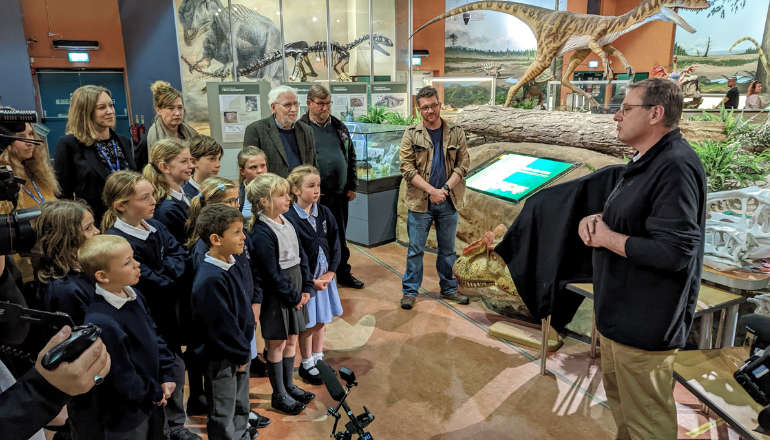
Millions of viewers of the BBC's One Show watched Professor Ben Garrod visit the Dinosaur Isle Museum in Sandown with a group of children from Brighstone Primary School.
Professor Garrod joined the youngsters in the museum as the latest addition to the display of dinosaurs was unveiled — a life-size replica of the head of Brighstoneus simmondsi.
The dinosaur is named after the village of Brighstone where it was discovered, and in honour of local fossil-hunter Keith Simmonds.
The dinosaur was a plant-eating herd animal up to eight metres long, which lived 125 million years ago.
The fossil is one of several dinosaur species that are unique to the Isle of Wight.
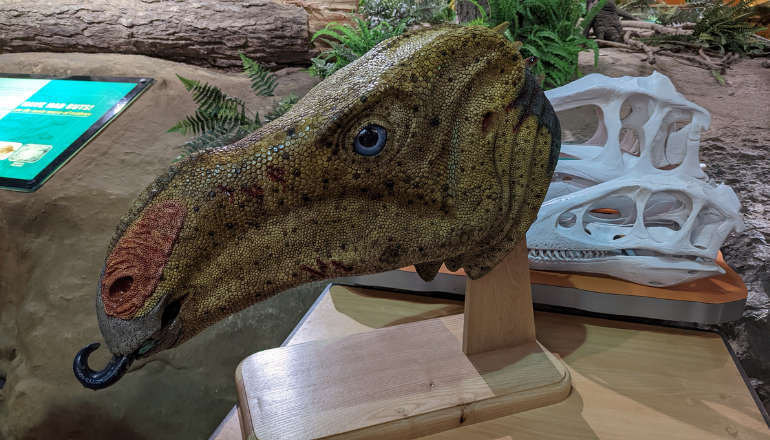
The new dinosaur head, plus many of the actual fossil bones, can now be seen on display in the museum on Culver Parade.
Island-based paleoartist Andrew Cocks was interviewed for the BBC TV show The One Show by Professor Garrod after he revealed the impressive dinosaur head.
Andrew explained how he did it:
"I digitally 3D-scanned the remaining parts of the skull, printed these out and then began creating a replica skull.
"I had help from Keith Simmonds, who found the specimen back in 1978, and Dr Jeremy Lockwood, who identified the dinosaur.
"The job took me over three months — I'd say there's roughly a quarter of a million scales on that head — and every scale is placed by hand."
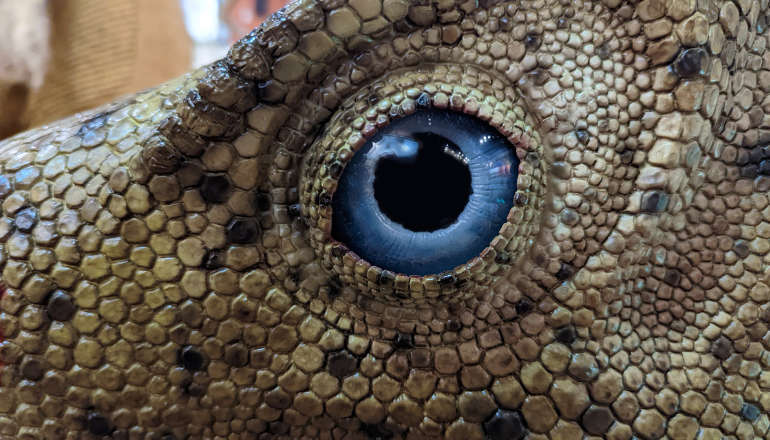
Collector Keith Simmonds was also at the museum to see his discovery brought to life — and to accompany his granddaughter Ila who was one of the pupils visiting from Brighstone School.
Keith said:
"Andrew's good at what he does and it's quite something to see this after all these years."
Dinosaur Isle Museum curator, Dr Martin Munt, added:
“The Dinosaur Isle collection contains many specimens collected from accurately recorded areas, which makes it of greater use for scientific study than older collections with little information associated with the bones.
"Because of this the Island and our collection has become one of the best places in Europe for dinosaur finds and research."

 Four Men Arrested Following Rogue Trader Activities In East Cowes
Four Men Arrested Following Rogue Trader Activities In East Cowes
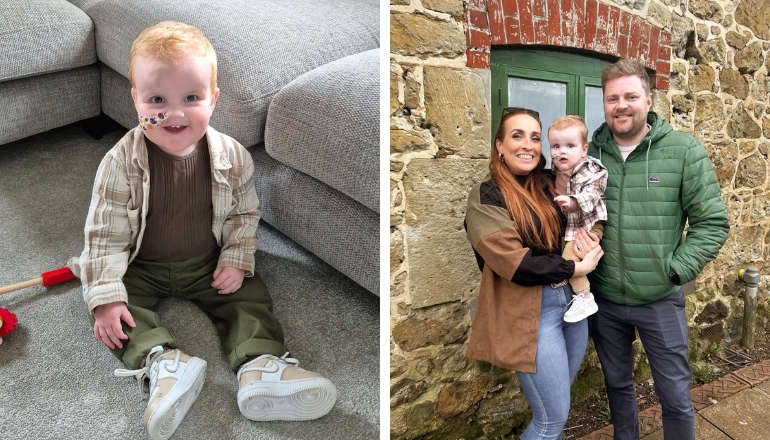 Rugby Players Set To Scale Great Heights For Teddy
Rugby Players Set To Scale Great Heights For Teddy
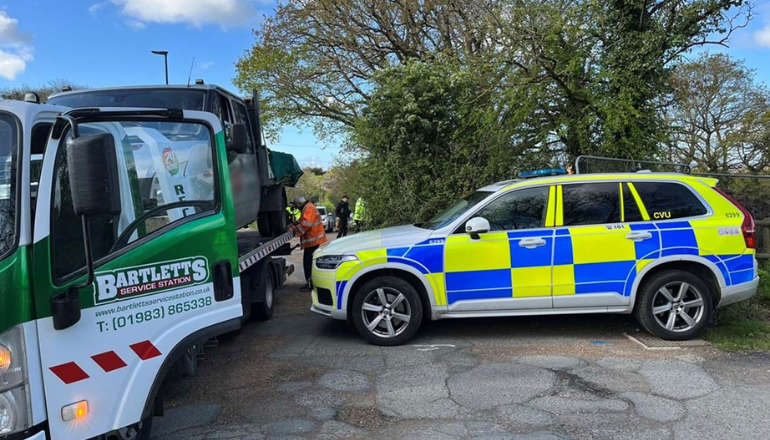 Drug Driving, Domestic Abuse And Stalking Among Arrests Made As Police Target Isle Of Wight Criminals
Drug Driving, Domestic Abuse And Stalking Among Arrests Made As Police Target Isle Of Wight Criminals
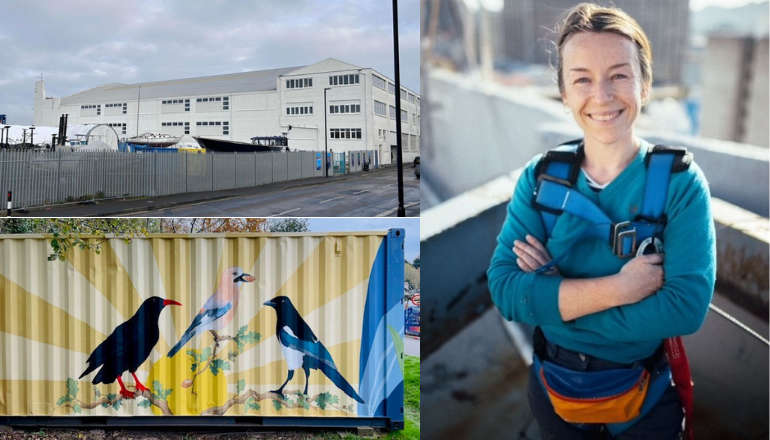 Work Begins On ‘Monumental’ Mural Project At Historic Columbine Building
Work Begins On ‘Monumental’ Mural Project At Historic Columbine Building
 More Acts Added To Isle Of Wight Festival Line-Up
More Acts Added To Isle Of Wight Festival Line-Up
 St Mary’s Vaccination Hub Gets Ready For Spring Covid-19 Vaccinations
St Mary’s Vaccination Hub Gets Ready For Spring Covid-19 Vaccinations
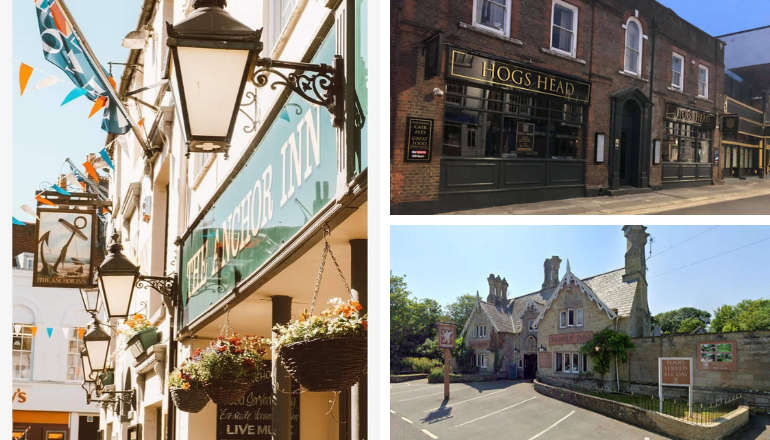 Twenty Isle Of Wight Pubs Under Threat As Stonegate Issues Profit Warning
Twenty Isle Of Wight Pubs Under Threat As Stonegate Issues Profit Warning
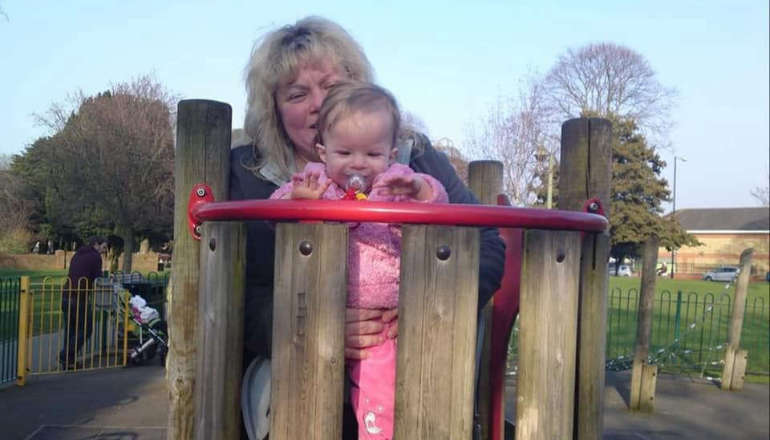 Fundraiser Launched As Kezi's Kindness Founder Diagnosed With Incurable Cancer
Fundraiser Launched As Kezi's Kindness Founder Diagnosed With Incurable Cancer
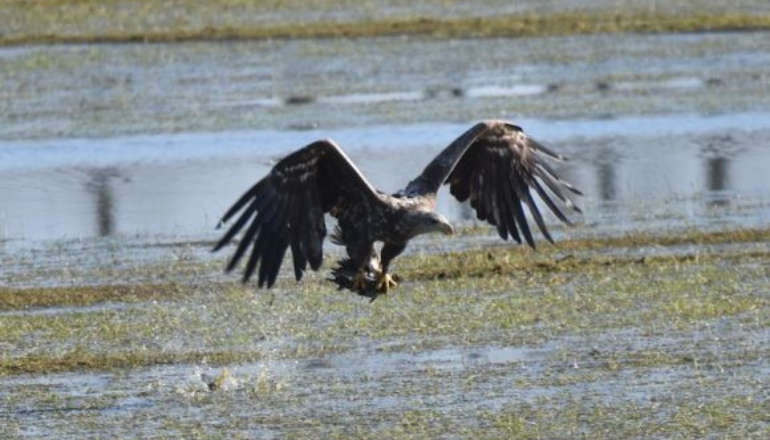 Bon Voyage — White-Tailed Eagle Soars To France
Bon Voyage — White-Tailed Eagle Soars To France
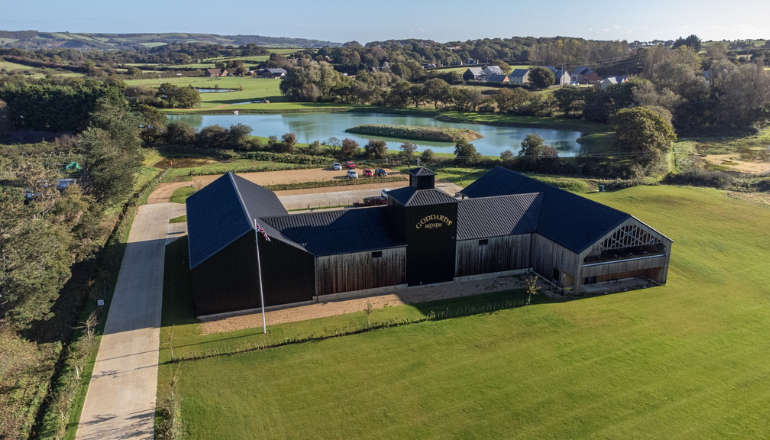 Goddards Brewery Scoops Four Top Industry Awards At International Competition
Goddards Brewery Scoops Four Top Industry Awards At International Competition
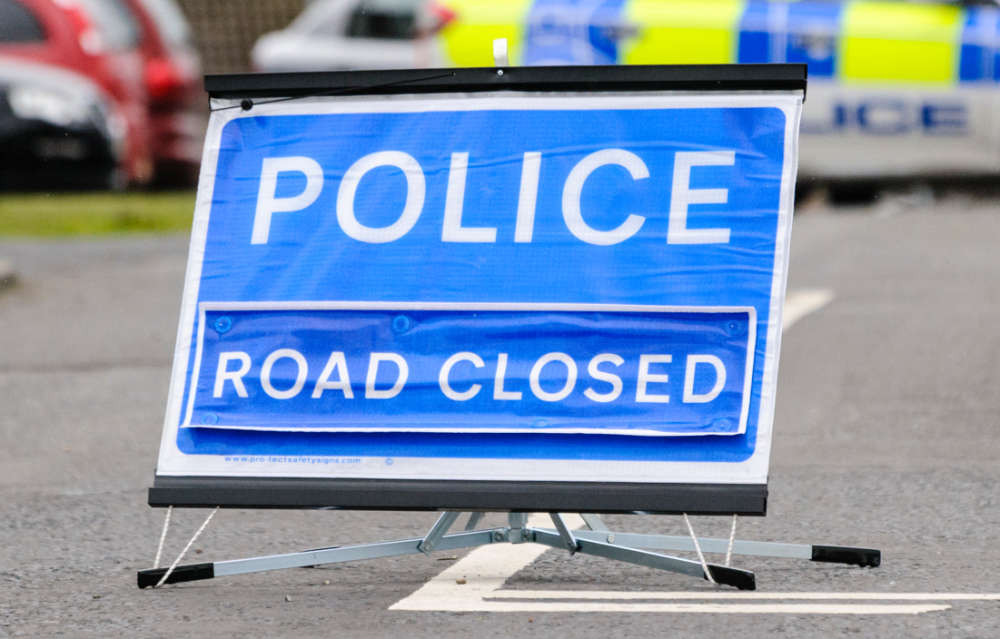 Briddlesford Road Crash Results In Two Injured
Briddlesford Road Crash Results In Two Injured
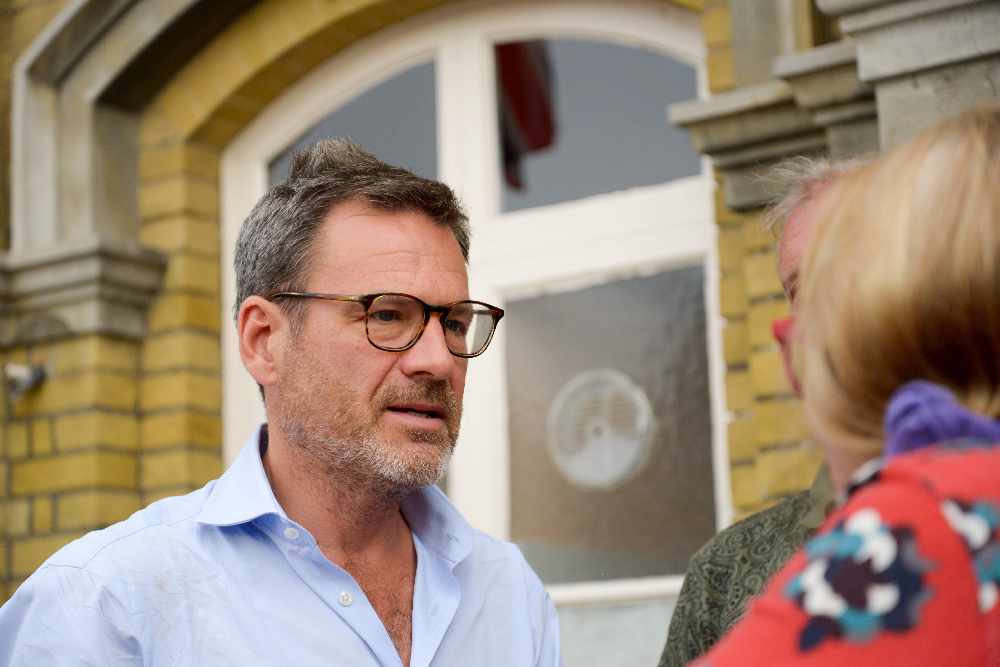 Isle Of Wight MP Extolls Virtues Of Joint Emergency Service Officers For Isle Of Wight
Isle Of Wight MP Extolls Virtues Of Joint Emergency Service Officers For Isle Of Wight
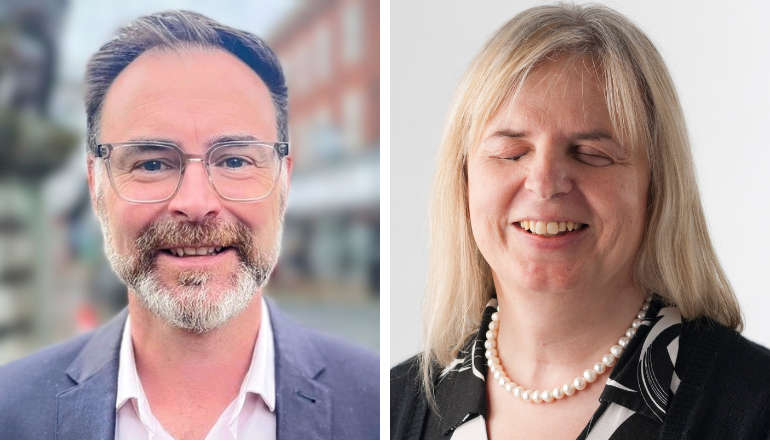 Island Labour Announces Parliamentary Candidates As Quigley Vows To 'Take Fight' To Bob Seely
Island Labour Announces Parliamentary Candidates As Quigley Vows To 'Take Fight' To Bob Seely
 Can You Help Police To Identify Man Linked To Waitrose Theft?
Can You Help Police To Identify Man Linked To Waitrose Theft?
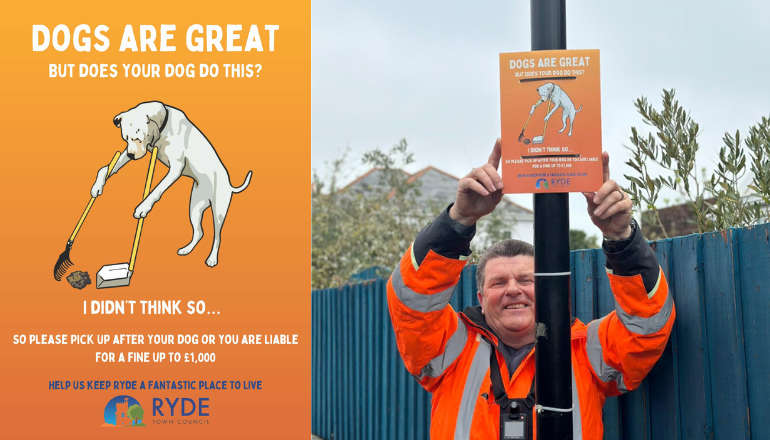 Ryde Town Council In Crackdown On Dog Fouling
Ryde Town Council In Crackdown On Dog Fouling
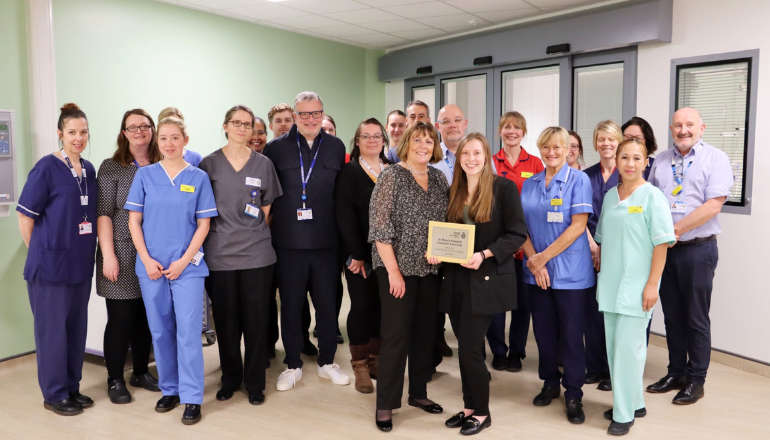 Former Patient Opens New Intensive Care Unit
Former Patient Opens New Intensive Care Unit
 Isle Of Wight Primary School Place Allocations Announced For September
Isle Of Wight Primary School Place Allocations Announced For September
 The Rules Islanders Need To Know For Police And Crime Commissioner Election Postal Voting
The Rules Islanders Need To Know For Police And Crime Commissioner Election Postal Voting
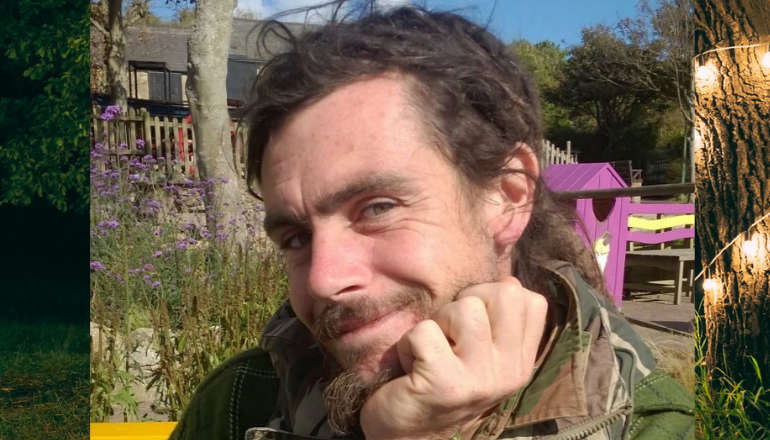 Family Pays Tribute To Paul Hart Following Fatal Newport Collision
Family Pays Tribute To Paul Hart Following Fatal Newport Collision
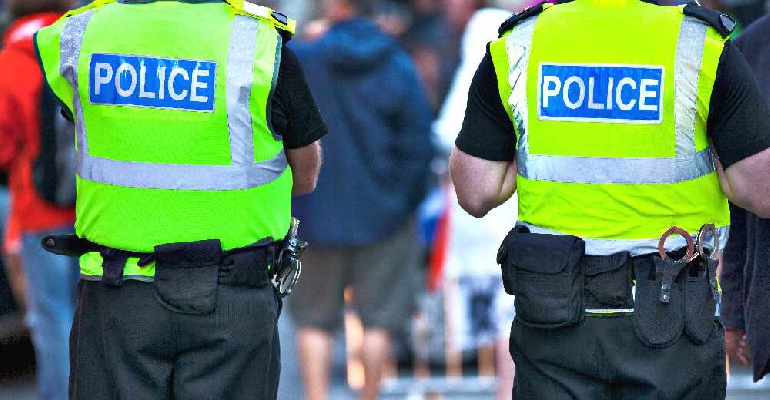 Teenager Sentenced For Planning Isle Of Wight Festival Terrorist Attack
Teenager Sentenced For Planning Isle Of Wight Festival Terrorist Attack


